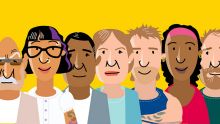Millions of Australians are wasting money on drugs for back pain that do more harm than good, a study has found.
Sydney researchers say patients taking commonly used non-steroidal anti-inflammatory drugs are 2.5 times more likely to suffer from gastro-intestinal problems, such as stomach ulcers and bleeding.
More National News Videos
Electricity a 'game changer' in pain management
Jeanette Ryan has suffered from chronic, debilitating pain in her back and legs since a car accident four years ago. For two weeks back in March, doctors managed to give her significant relief.
Yet anti-inflammatory drugs, such as ibuprofen, offer "very limited" short-term pain relief, according to the study's lead author associate professor Manuela Ferreira. "They do reduce the level of pain, but only very slightly, and arguably not of any clinical significance," she said.
"If you consider the side effects, which are important, we argue that the benefit is not really worthwhile."

The work by researchers at The George Institute for Global Health is the latest study to question the effectiveness of medicines for treating back pain.
Earlier research found that paracetamol is ineffective and opioids provide minimal benefit over a placebo.
Yet most clinical guidelines recommend paracetamol as a first-line treatment for lower back pain followed by NSAIDs and opioids.
Research fellow Gustavo Machado, of The George Institute and Sydney University's School of Medicine, said a stronger focus was needed on preventing back pain.
"Millions of Australians are taking drugs that not only don't work very well, they're causing harm," he said. "We need treatments that will actually provide substantial relief of these people's symptoms."
Spinal pain – either neck or back – is the leading cause of disability worldwide, according to the research published in the Annals of the Rheumatic Diseases.
An estimated 80 per cent of Australians experience lower back pain during their lives, with at least 10 per cent of people experiencing significant disability.
The research into anti-inflammatory drugs, also known as NSAIDs, examined 35 trials involving more than 6000 people.
It found only one in six patients treated with anti-inflammatory pills achieved any significant reduction in pain.
The findings do not surprise Kat Shen, who has suffered recurring lower back pain since the birth of her son Alexander four years ago.
She said the combination of working full-time in a cafe and "carrying a rather heavy child" had exacerbated the pain over the past few months.
Shen, 28, said she tried to avoid taking drugs but "I get to day three of work and I'm in a lot of pain and I usually hit the painkillers then".
Shen has sought pain relief from drugs such as Panadol, Nurofen and codeine. But side effects in the form of stomach problems make her wary of taking painkillers.
"It's just a vicious cycle of pain and then more pain," she said.
"Other than that, occasionally the physio, but I mean everything is kind of a Band-Aid. I know the pain is going to come back so I feel like I'm wasting my money."
Shen said she had found gentle forms of exercise – walking, yoga – were effective in relieving pain. "But because I have such a busy lifestyle at the moment I don't have time or the energy to do that kind of stuff."
Lesley Brydon, the chief executive of Pain Australia, a not-for-profit body that lobbies to improve pain treatment and management, said anti-inflammatory medications could offer relief but had limited use in treating back pain.
Brydon said they should only be used for short periods of time.
"Back pain can have many causes and is usually best addressed with self-management strategies, which may include special exercise and hydrotherapy. Therapeutic massage may also be helpful," she said.
Almost one-quarter of the 782,891 people receiving the disability support pension have a muscular-skeleton condition as their primary medical ailment.
Associate professor Ferreira, a senior research fellow at The George Institute, said about $8 billion is spent in Australia every year on painkillers and other treatment for back pain as well as on other costs, such as sick days and paying for carers.
"There is a lot of money involved in back pain," she said.
"It's a problem everywhere in developed countries so that's why we're trying to figure out what treatments are beneficial."
Associate professor Ferreira said there was no quick fix to treat back pain.
But studies had suggested lifestyle changes, such as losing weight, exercising more and reducing stress and anxiety could effectively alleviate back pain and had less side effects.
This could also reduce the strain on the health care system by reducing costs and unnecessary treatments such as X-rays and surgery.
"We are spending too much money on drugs," she said.















